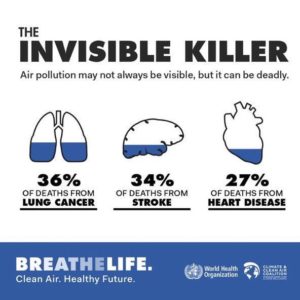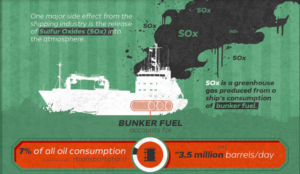‘World’s 1.5C climate target ‘deader than a doornail’ – the Guardian

The internationally 2015 Paris agreement to keep the world’s temperature below 1.5C in 2050 will not be achieved – with 2024 being the year above this threshold – despite the current gathering of world’s decision-makers at the United Nations COP29 summit in Baku, Azerbajan.

In 2030, the reduction in greenhouse gas emissions from the EU is expected to reach 49% – according to the EEA (European Environment Agency) – still far from its target of 55%. However, even this goal would be insufficient to meet the Paris Agreement and shows that much more ambition is needed.

Although Portugal is trying its best – from 2005 to 2022 it reduced 34% of its emissions – the country definitely doesn’t belong to the frontrunners in the EU (like Sweden) but is at the average of all EU countries in terms of emissions.

There are sectors that are being difficult to decarbonize. ‘Transport, Agriculture and Waste are still far from reaching the sectorial goals defined for 2030’, says the State of the Environment Report (REA) released by the Portuguese Environment Agency last month.

With the exception of the railways, emissions from all other means of transport increased. In particular, the evolution of sectors such as aviation and the oil industry are cause of concern. The major emissions zones are all close to the sea, but two stand out, the Galp refinery in Sines and the Humberto Delgado airport in Lisbon.

The international airport is the most polluting with 3.5 million tons and emissions continue to increase, with special thanks to private aviation.

Portugal is on the list of 20 countries with the most jet planes for the private market. The country is in 14th place, with an equivalent of 1.5 jets per 100,000 residents. Behind the USA (5.4/100,000) and Switzerland (3.7/100,000) but ahead of the UK (0.8/100,000) and Germany (0.7/100,000). The ‘golden visas’ definitely explain its ranking on the list.

Although Galp’s refinery in Sines recorded a decline last year, it will still emit cerca 2.2 million tons this year. ‘Galp’s intention to review its decarbonization targets – due to the discovery of oil in Namibia – and the slower execution of renewable projects is very worrying, the environmental movement ZERO said in a statement.

The port of Sines appears in 3rd place with 1.2 million tons and an upward trend since 2021. Carnes Landeiro in Barcelos, the Ribatejo Thermoelectric Power Plant in Carregado and the Cimpor’s Cement factory in Souselas are in 4th, 5th and 6th place, respectively.

With a centre-right government in power since the beginning of this year, environmentalists fear the focus on technology and economy could undermine the climate transition. They are calling on the government to uphold the country’s 2045 goal for reaching carbon neutrality, rather than delaying it until 2050 as far-right groups are pushing for.
Enjoy your week Aproveite a semana (pic Público/Sapo)







 Lisbon is Europe’s Green Capital 2020. A recognition of the work the city has been done over the past years towards a greener and more people-friendly city (
Lisbon is Europe’s Green Capital 2020. A recognition of the work the city has been done over the past years towards a greener and more people-friendly city ( Extension of
Extension of  To date, the capital has around 800.000 trees. Lisbon’s biggest – 10 km² sized – Monsanto park, not only generates much-desired shadow but captures CO2 as well. One of the first initiatives of the City Council in January has been the planting of
To date, the capital has around 800.000 trees. Lisbon’s biggest – 10 km² sized – Monsanto park, not only generates much-desired shadow but captures CO2 as well. One of the first initiatives of the City Council in January has been the planting of  Although the sale of electric cars doubled in 2019, compared to the previous year, there are only 1000 public
Although the sale of electric cars doubled in 2019, compared to the previous year, there are only 1000 public  It is difficult to understand why the city is mobilized to be the Green Capital 2020 when major political decisions point into the
It is difficult to understand why the city is mobilized to be the Green Capital 2020 when major political decisions point into the  Every major city in Europe is warmer in the 21st century than it was in the 20th. In December 2015, 195 member states of the UN agreed in the Paris Agreement to limit the temperature increase to 1.5⁰C above preindustrial levels. For several cities on the Iberian Peninsula, this 1.5⁰C threshold has already been reached.
Every major city in Europe is warmer in the 21st century than it was in the 20th. In December 2015, 195 member states of the UN agreed in the Paris Agreement to limit the temperature increase to 1.5⁰C above preindustrial levels. For several cities on the Iberian Peninsula, this 1.5⁰C threshold has already been reached. Even limited temperature increases have severe consequences. A hotter atmosphere can absorb more water leading to severe floods between longer and dryer periods. Heatwaves lead to excess mortality and mosquito-borne diseases like dengue fever has been creeping North with epidemics in Portugal in 2012. Recent research shows that when the daily temperature increases above 22⁰C,
Even limited temperature increases have severe consequences. A hotter atmosphere can absorb more water leading to severe floods between longer and dryer periods. Heatwaves lead to excess mortality and mosquito-borne diseases like dengue fever has been creeping North with epidemics in Portugal in 2012. Recent research shows that when the daily temperature increases above 22⁰C,  Although Portugal had in 2018 the highest
Although Portugal had in 2018 the highest 
 Massive amounts of particulate matter and sulphur dioxide (SO2) have made Lisbon’s port the sixth most polluting in Europe.
Massive amounts of particulate matter and sulphur dioxide (SO2) have made Lisbon’s port the sixth most polluting in Europe. In order to prevent global warming
In order to prevent global warming